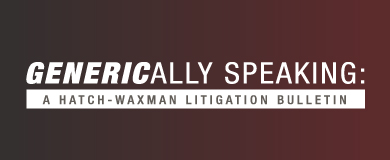- Acumen Powered by Robins Kaplan LLP®
- Affirmative Recovery
- American Indian Law and Policy
- Antitrust and Trade Regulation
- Appellate Advocacy and Guidance
- Business Litigation
- Civil Rights and Police Misconduct
- Class Action Litigation
- Commercial/Project Finance and Real Estate
- Corporate Governance and Special Situations
- Corporate Restructuring and Bankruptcy
- Domestic and International Arbitration
- Health Care Litigation
- Insurance and Catastrophic Loss
- Intellectual Property and Technology Litigation
- Mass Tort Attorneys
- Medical Malpractice Attorneys
- Personal Injury Attorneys
- Telecommunications Litigation and Arbitration
- Wealth Planning, Administration, and Disputes
Acumen Powered by Robins Kaplan LLP®
Ediscovery, Applied Science and Economics, and Litigation Support Solutions
-
June 1, 2022Chambers USA Recognizes Five Robins Kaplan Practice Groups And 17 Lawyers In 2022 Guide
-
June 1, 2022Seasoned Attorney Joins Firm’s Business Litigation Group
-
May 26, 2022Shira Shapiro Named Woman of Promise By The Pearl Society
-
June 3, 202219th Annual Advanced Insurance Law
-
June 9, 2022Building Your Brand: Perspectives and Insights from a Diverse Bar
-
June 10, 2022LGBTQ Legal Services: Transgender Name Change Clinic
-
May 24, 2022Briefly: Seeking Fees and Costs While on Appeal
-
May 19, 202211th Circ. Ban On Service Awards May Inhibit Class Actions
-
May 13, 2022Trademark Applications and the Murky Waters of Subject Matter Jurisdiction
-
June 2, 2022Sandberg Stepping Down as Meta COO After 14 Years
-
June 1, 2022Markets Revert to Recent Form as Pessimism Takes Hold
-
May 27, 2022Unexpectedly Strong Retail Sales Pull Markets Back from the Brink
Find additional firm contact information for press inquiries.
Find resources to help navigate legal and business complexities.
Horizon Medicines LLC v. Dr. Reddy’s Labs., Inc.
Vimovo® (naproxen and esomeprazole magnesium)
February 17, 2021

Case Name: Horizon Medicines LLC v. Dr. Reddy’s Labs., Inc., No. 15-3324 (SRC), 2021 WL 616067 (D.N.J. Feb. 17, 2021) (Chesler, J.)
Drug Product and Patent(s)-in-Suit: Vimovo® (naproxen and esomeprazole magnesium); U.S. Patents Nos. 8,858,996 (“the ’996 patent”) and 9,161,920 (“the ’920 patent”)
Nature of the Case and Issue(s) Presented: Plaintiffs were the owner and licensee of patents that covered the drug Vimovo. Defendants were pharmaceutical companies that filed ANDA applications for approval to market generic versions of Vimovo. The first round of litigation between the parties resulted in the court’s invalidating two patents for failure to meet the written-description requirement. During that case, nine additional patents covering Vimovo were listed in the FDA’s Orange Book, including the two patents-in-suit. DRL moved for summary judgment of invalidity of the asserted claims in the ‘996 and ‘920 patents for lack of adequate written description. Relying on the first litigation, DRL argued that the claims were invalid under the doctrine of issue preclusion, or, in the alternative, the court’s claim construction warranted a grant of judgment of invalidity as a matter of law. The court denied DRL’s motion
Why Plaintiffs Prevailed: DRL did not prove one of the requirements for establishing issue preclusion, namely, that the identical issue was adjudicated previously. The court found that DRL’s contention that the court had construed the patents-in-suit to require the same effective uncoated esomeprazole limitation as the patents from the prior litigation “has no basis in reality.” “The claim-construction decision has no discussion about uncoated anything, because that was not the issue. No issues about ‘coating’ were ever considered or determined: in this Court's claim construction Opinion and Order, filed August 14, 2020, the word ‘uncoated’ appears only in a quote from [the first litigation’s opinion].”
DRL also argued for identity of issues by asserting that any differences in claim language between the claims here and those in the prior litigation were “immaterial.” The court also took issue with this characterization. The differences in the wording of the claims merited, at least, some inquiry into the impact on the written-description determination. For example, claim 11 of the ‘920 patent and claim 12 of the ‘996 patent both expressly required the esomeprazole layer to have a coating, while the prior litigation focused on uncoated proton pump inhibitors (“PPI”). DRL did not present an analysis of the differences in claim language, or show that the differences had no impact on the written-description inquiry. Instead, DRL relied on Federal Circuit case law, which the court distinguished.
DRL next argued that, in the alternative, DRL was entitled to judgment as a matter of law because there were no genuine issues of material fact, given the outcome of the prior litigation, concerning what the common specification described—or didn’t describe—about “effective” uncoated PPI. The court held that DRL “had not even attempted” to meet its burden of proof of invalidity by clear and convincing evidence. DRL had not affirmatively shown the absence of a genuine issue of material fact, and the court rejected this argument.
Related Professionals
Related Publications
Related News
If you are interested in having us represent you, you should call us so we can determine whether the matter is one for which we are willing or able to accept professional responsibility. We will not make this determination by e-mail communication. The telephone numbers and addresses for our offices are listed on this page. We reserve the right to decline any representation. We may be required to decline representation if it would create a conflict of interest with our other clients.
By accepting these terms, you are confirming that you have read and understood this important notice.
